The bath complex includes several rooms: a steam room or a sauna, a washing room, a dressing room, sometimes a pool and a guest room. To decorate rooms, completely different materials are needed, since the operating conditions in them are different.
Types of coatings
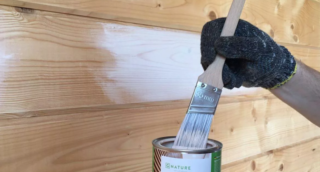
The steam room and the washing room are subjected to the greatest stress. However, this load is different.
- In a sauna, the air temperature can rise up to 110 ° C. At the same time, the humidity here is low. Paint for such a room must withstand heat, but may be sensitive to the action of water.
- In the steam room, the humidity is much higher - from 70 to 100%, depending on the type of bath. The temperature is noticeably lower - it rarely rises above 60 ° C. The finishing material must be resistant to the action of water and steam and to temperature extremes at the same time.
- In the washing temperature, the temperature is not higher than the comfortable + 30 ° С, but the humidity here can be high - 90-100%. The paint is chosen as waterproof as possible.
In practice, painting a bathhouse inside, especially a log house, is not a successful idea. Any paint will be less resistant to the above factors than the wood itself. But if there is no other way to protect the finish, they also resort to painting.
Oil impregnations and varnishes
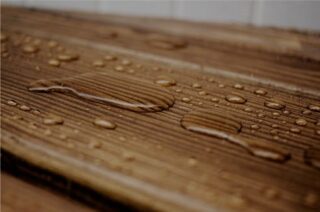
Bath - a building used at regular intervals. The high temperature in the steam room is maintained only during the procedure. Then the room is specially ventilated by cooling to a low temperature.
In this mode, the boards dry out and crack rather than mold and rot. Therefore, for the treatment of the steam room, oil impregnations and varnishes are best suited.
The oil penetrates into the top layer of the tree, forming not a film, but a structure impermeable to water. At the same time, the wood continues to expand normally and decrease in volume when the temperature changes. This is how the oil prevents cracking.
Antiseptics for the floor in the bath
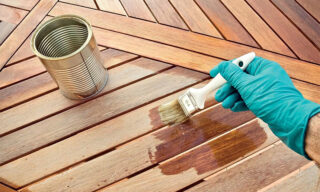
It is not enough to paint the steam room or sauna in the bath - you need to take care of protection from decay. The weak link in this room is the floor. Water flows down on it, steam settles, it comes into contact with a cold concrete base or soil. To prevent the wooden floor in the bath from decaying 5–6 years after construction, it must be treated with antiseptic impregnations.
Liquids based on substances with a disinfectant effect:
- Acrylic-based water-based compositions. Moisture resistant, prevent the growth of fungus, but not too effective. More suitable for dressing room.
- Organic - based on oils. Better absorbed by wood and moisture resistant.
- Products based on wax and urethane oils are absorbed to a great depth. In addition to the water and dirt repellent effect, they give the timber and lining velvety and softness.
- Combined formulations increase both water resistance and fire safety.
It is strictly forbidden to use compounds for processing wood that emit toxins during drying.
Water dispersion impregnation
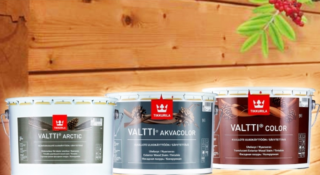
It is allowed to paint the logs inside the sauna or steam room in the bath with water-soluble paints.
The floor and walls in the steam room are painted with water-dispersion acrylic paint.It is quite resistant to temperature changes, does not interfere with the penetration of steam. Hiding power is usually low, but any color can be given to the wood. Minus - a small durability, the paint is washed out rather quickly.
The paint for the bath in the washing room should be as resistant to water as possible. The best products are latex or polyurethane based. For dressing rooms or rest rooms, finished with plaster, you can use any compositions marked "for interior decoration".
The paint forms a film coating on the wood surface. And the oil formulations penetrate inside, therefore, the walls are treated with impregnations in the steam room.
Wax-based impregnations
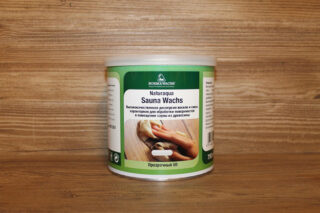
The wax is offered as a liquid - viscous composition, and solid. The latter is somewhat more difficult to apply without habit, but the treatment is carried out less often. The product does not create a sticky film, does not attract dirt.
If you just need to protect surfaces from water and steam, wax is more suitable. It is transparent, does not hide the structure of the wood, has some antioxidant activity, and therefore prevents the wood from darkening.
Water based polyurethane varnish
This is a kind of resin solution, where water, ethanol, ether are used as a solvent. For the bath, choose water-soluble varnishes. They are resistant to high temperatures and to acids, oils and salts.
The polyurethane varnish is resistant to wear and tear. Since it is based on water, the varnish layer does not create increased tension on the surface of the tree, therefore it is not prone to cracking. And since the resins already cure during drying, there is no subsequent flaking.
Criterias of choice
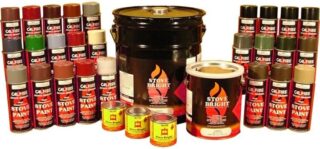
For each room in the bath complex, you need to choose your own processing option.
- For a steam room, acrylic or oil paints are of little use, although it is allowed to use heat-resistant acrylic compounds. Oil is good because it permeates the top layer of wood and prevents it from drying out. A polyurethane-based varnish is suitable.
- In a sauna, the main factor of choice is heat resistance. Special water-soluble paints, oil waxes, waxes are suitable. Oils and oil paints must not be used.
- For the washing room, they buy paints and varnishes that are as resistant to water as possible - on a latex or polyurethane base. Oil is not suitable: the product does not form a waterproof film, but only does not allow moisture to penetrate deep into the wood.
- For the dressing room, the only selection criterion is the safety and beauty of the finish. Compositions based on drying oil were undesirable: they dry for a long time, retain an unpleasant odor.
The coloring agent must be free of formaldehyde. At high temperatures, the substance is destroyed and released into the air.
Tools for the job
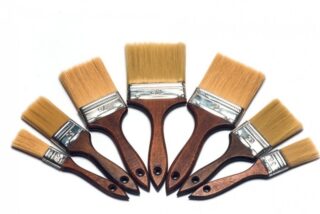
To paint a dressing room or a sauna inside a wooden bath, you need the most common tools:
- the brush is wide and narrow if there are many carved details on the furniture;
- roller - suitable for painting walls and floors;
- spray gun;
- a special swab for waxing;
- for the same, you can use an iron sponge for washing dishes or a thick brush.
To prepare the surface, you will need sandpaper, a sander, a vacuum cleaner for cleaning dust, and more.
Preparation for painting
Preparation for staining the bath is standard:
- Walls, floors, furniture are cleaned of dust and dirt. It is advisable to degrease the surface by treating with white alcohol.
- To make the paint better, sand it. Better to use a sander.
- If the surface is painted or waxed, a primer is applied. The composition improves adhesion to the paint coating and reduces its consumption. It is not necessary to prime it under varnish.
Painting is performed after the primer has completely dried.
Features of paint application
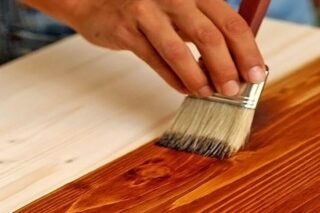
If paints are used to decorate the bath and sauna, several recommendations are followed during work.
- Painting is most often done with a brush. No other tool is used for bathroom furniture.
- The paint is applied along the direction of the wood grain. Requires at least 2 coats. The second is applied only after the first is completely dry.
- At the ends, the paint is applied in 4 layers.
Walls or ceilings are much easier and faster to paint with a spray gun.








